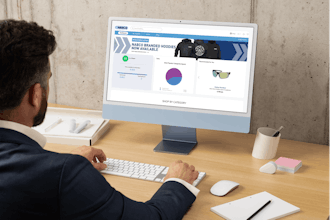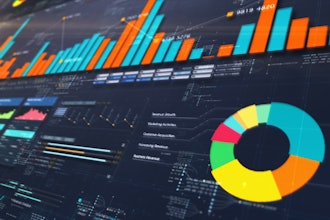Retailers that boast optimal prices are able to grab the attention of customers and gobble up the market whole, earning them more revenue, too. AI-powered price optimization assists companies with creating winning pricing strategies that way they can raise their revenues, even in the most intense market such as in the UK.
Competing in the retail market is only becoming more and more difficult as customers have become much more taxing and anticipate making purchases only at the optimal price. Retailers have to analyze that continuously growing amount of data within a market that is also only becoming more and more dynamic, therefore, prices have to be constantly adjusted.
The price assists shoppers with figuring out if they should or shouldn’t make a purchase along with which retailer they should go with. Since retail is becoming more digital, customers are vested with a variety of different tools that they can use to check the price of hundreds of retailers prior to committing to a purchase. As a result, the company with the most optimal price always comes out on top.
The proper price perception is at the core of winning over customers. Machine learning (ML) price optimization algorithms tools assist retailers in convincing customers that they have the lowest prices online.
Based on a study recently conducted by Deloitte, ML applications will be much more affordable, powerful, and common in the upcoming five years. A few retailers have already taken advantage of the strength of neural networks in order to become better. In fact, 70 percent of prosperous retail businesses profit from innovations that satisfy customer needs.
What are the pros of retail price optimization software?
Based on a report recently generated by Garner, AI-powered price optimization tools raise revenue by 1-5percent, raise margins by 2-10 percent, and drive customer LTV by 20 percent. In addition, they decrease discount approvals by 80 percent.
That being said, implementing AI in pricing yields different results for different companies as it depends on a variety of factors such as the position of the retailer within the market, how they were doing prior to AI, and how efficient and fast their decision-making process is.
Find Me a Gift is a UK-based online retailer that was interested in raising the number of transactions that occurred without losing margin. Products such as Competera’s ML-powered pricing tool, assisted the company with increasing its revenue by 13.9 percent, raising sales by 22.3 percent, and boosting their margin by 0.5 percent, all during a month-long pilot.
How is AI so efficient?
The algorithm processes copious amounts of data and learns from all kinds of experiments, regardless of whether they were successful or not. All of this is paid by the company in return for pricing recommendations that are accompanied by predictable outcomes, all of which can be repeated. The system understands which items need to be repriced, what form of repricing needs to be used, as well as when they should reach the objectives established by the company.
This self-learning algorithm takes into account every non-linear interconnection that occurs amid every item in question and the pre-established parameters, or pricing and non-pricing ones, in order to suggest the optimal price such as through price elasticity, which is the impact of price changes on an item group or a SKU, a grace period, seasonality, as well as customer browsing behavior. In addition, it takes into consideration everything that retail managers take into consideration whenever proposing prices based on their gut instinct: the standby price, the stock, the market price average, and the responsibility and placement of the SKU.
ML algorithms are useful for promos since AI models the reliance of sales on promos, analyzes how different promotional situations impact sales, and it provides the optimal promo scenario without needing to involve managers. This type of method lets retailers get rid of any unneeded promos that ruin margins.
Thanks to data, ML is so efficient. Before implementing AI, though, retail companies have to gather macroeconomic, historical, sales, as well as Google Analytics data into a cohesive format that spans one to two years.
Conclusion
Machine learning algorithms assist retail companies with creating the proper price perception by going through and evaluating copious amounts of data and taking into consideration every non-linear interconnections across items and multiple pricing and non-pricing parameters. Equipped with optimal prices, retailers can gain the attention of customers and take over the market.
Nikolay Savin, Head of Product at Competera.























